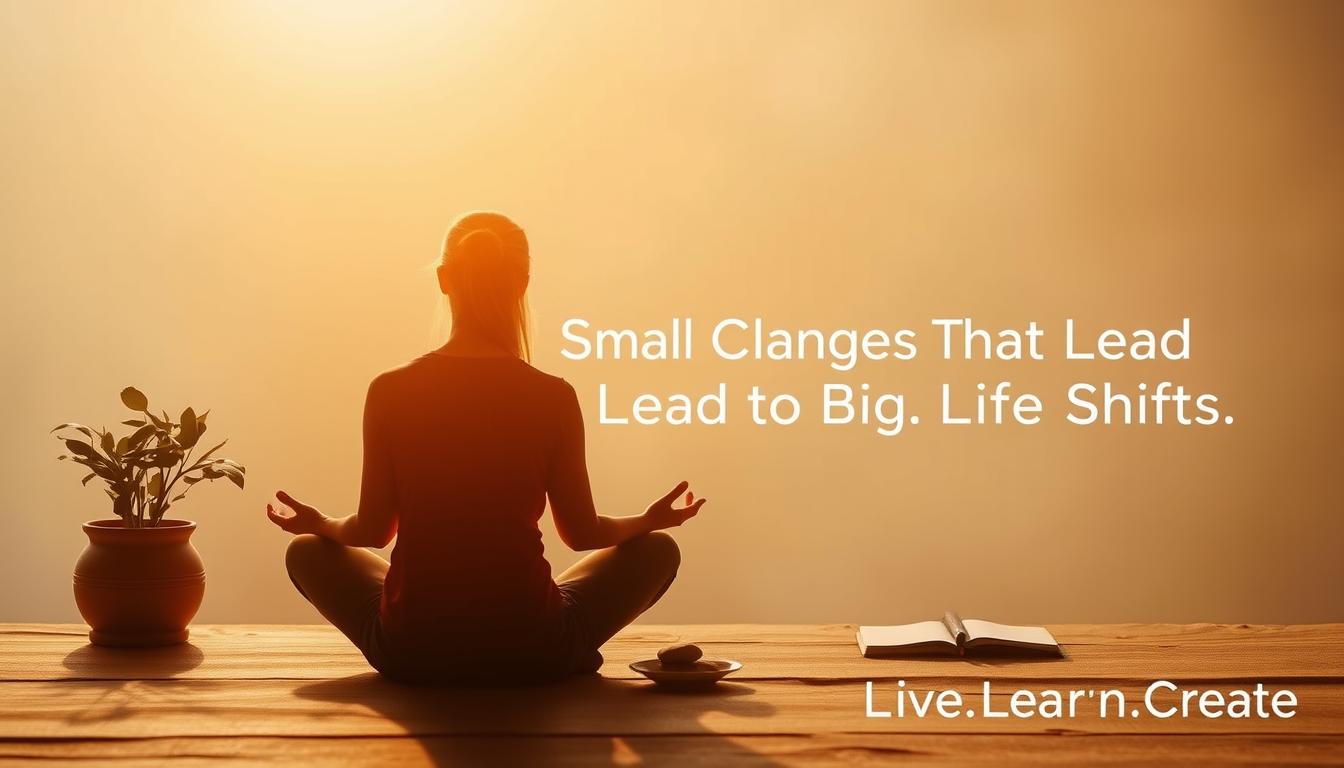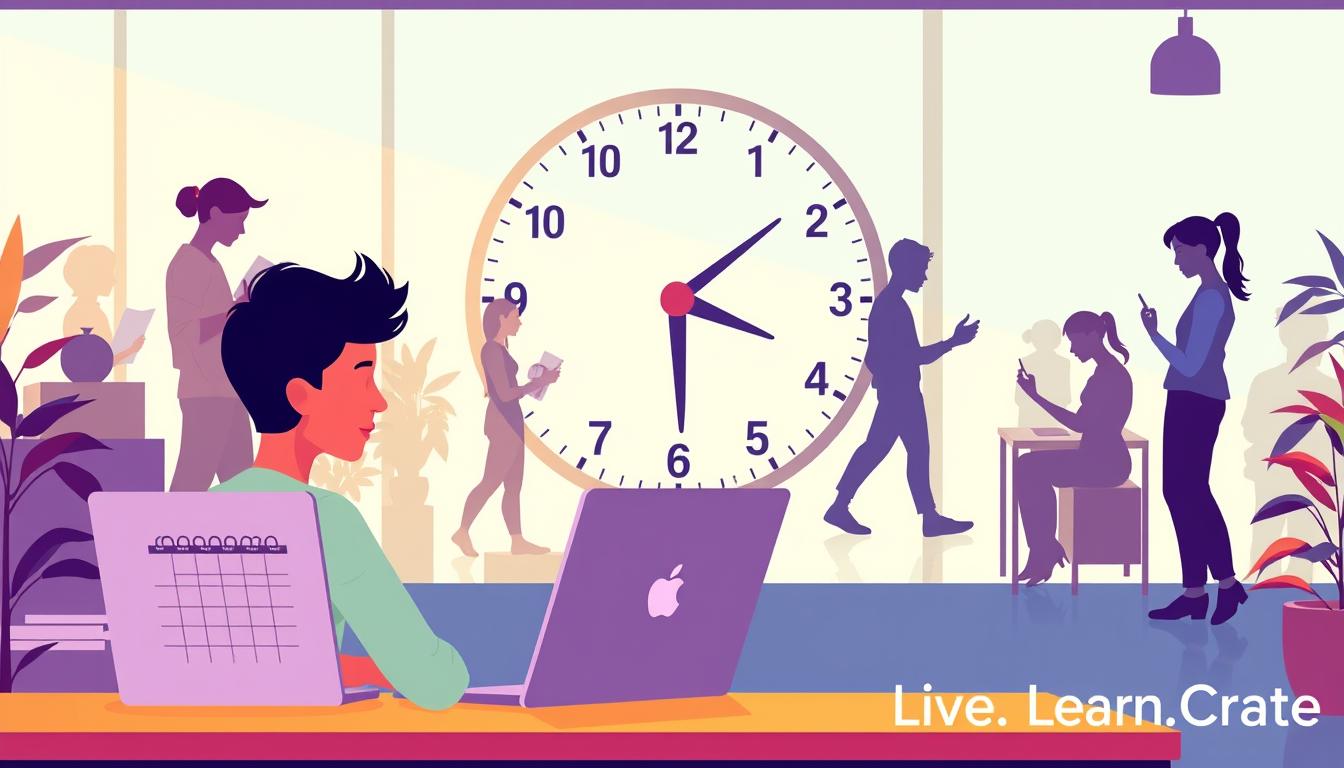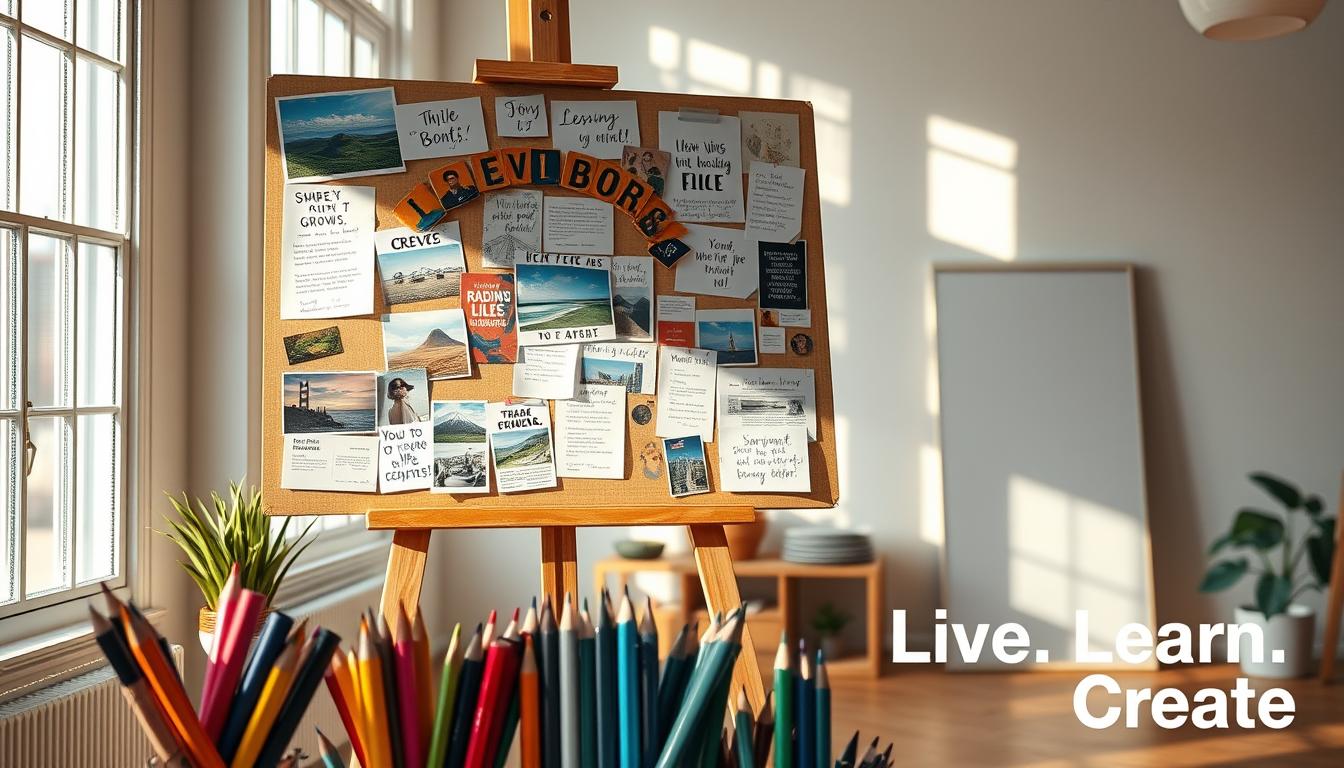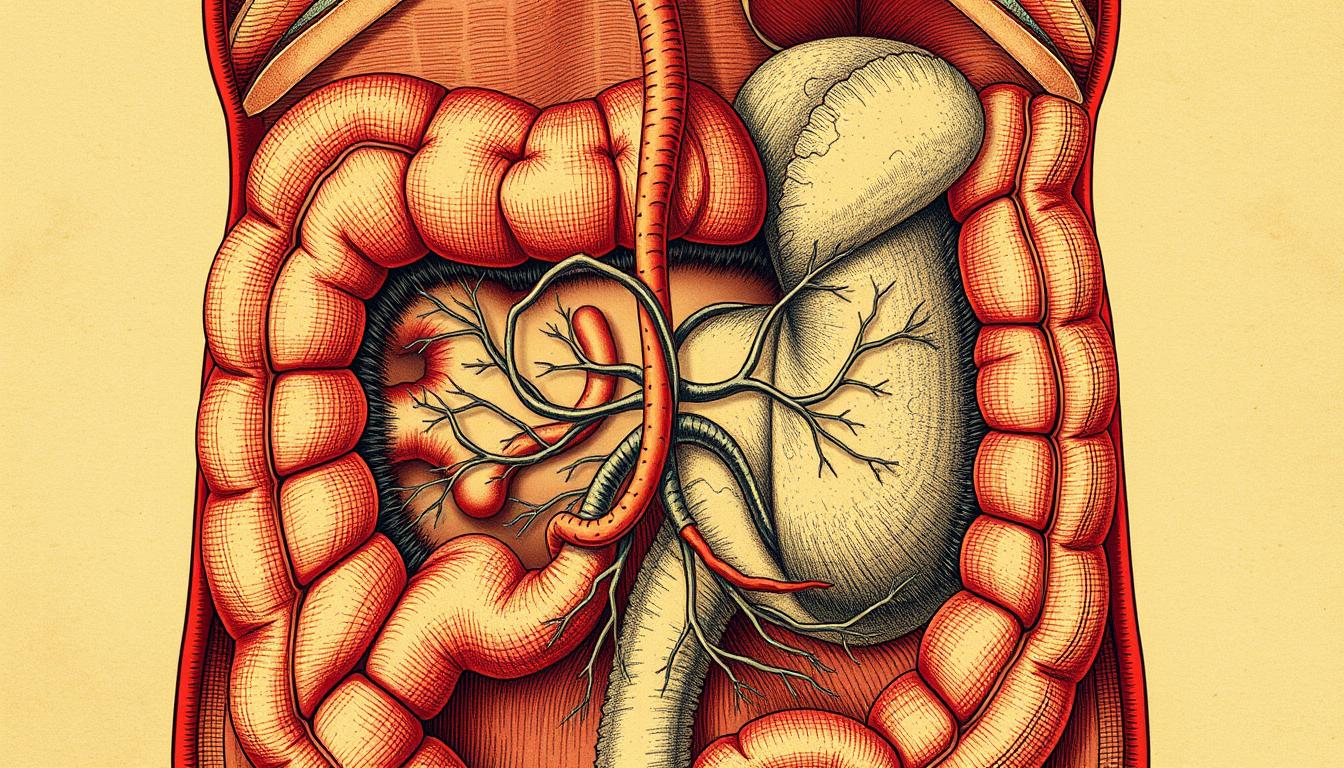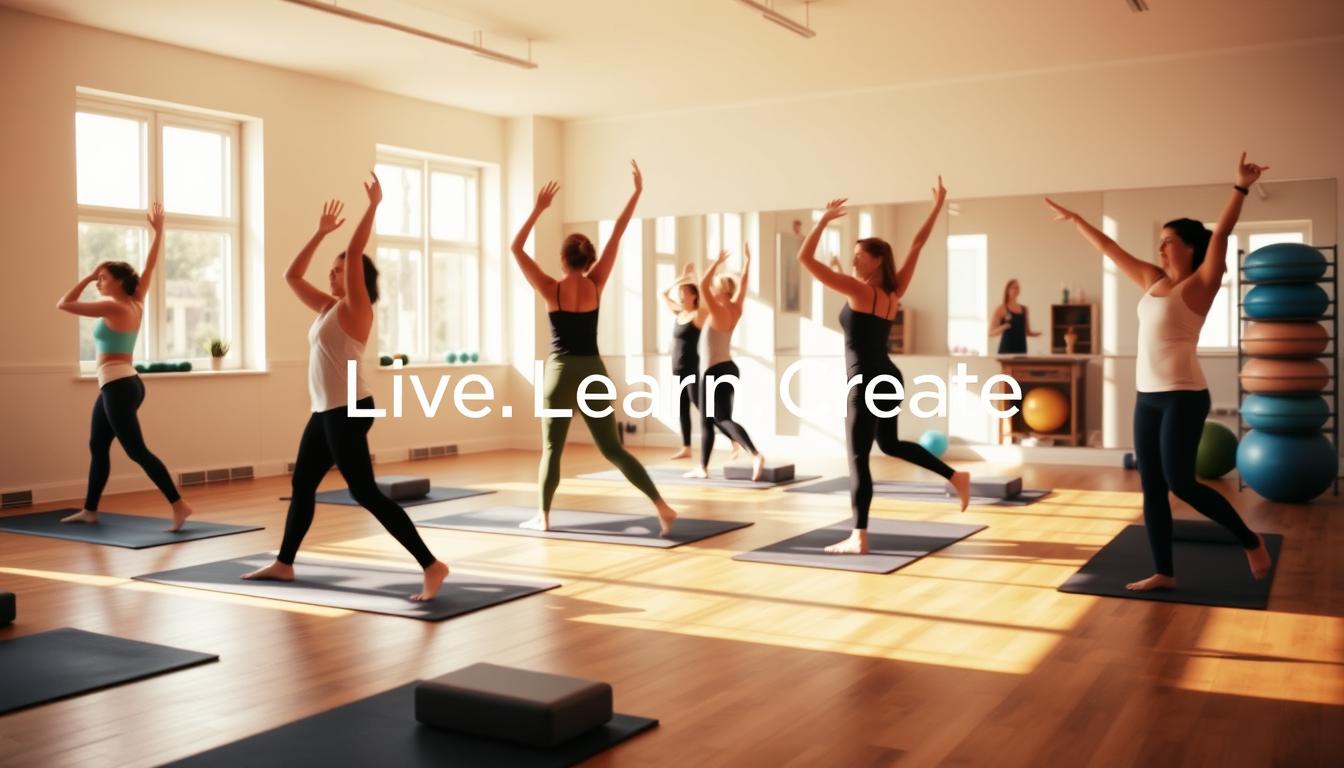Ever wondered how tiny adjustments can completely transform your life? The truth is, monumental shifts often begin with the smallest steps. Instead of overwhelming overhauls, sustainable change comes from consistent, mindful habits—one day at a time.
Think of your journey like planting a seed. Water it daily, and over time, it grows into something extraordinary. That’s the power of incremental progress. Whether it’s setting clearer goals or embracing your strengths (like those revealed in the HIGH5 assessment), small actions compound into lasting success.
Carmen Galloway’s resources—available at Barnes & Noble, Apple Books, and Udemy—offer practical tools to guide you. No magic formulas, just real-world strategies that work. Ready to start your way forward?
Key Takeaways
- Small, consistent changes create lasting transformation.
- Personal development thrives on incremental progress, not overnight fixes.
- Daily habits are the foundation of long-term success.
- Strength-based tools like HIGH5 can accelerate growth.
- Carmen Galloway’s resources provide actionable guidance.
What Is Personal Growth and Why Does It Matter?
Small steps today create the life you’ll love tomorrow. Unlike old-school self-help—focused on rigid discipline—modern development celebrates curiosity and adaptability. It’s not about fixing flaws but nurturing your potential.
Defining Personal Growth in Modern Life
Today’s self-improvement is holistic. It blends health, relationships, and purpose—not just career wins. Compare it to past approaches:
| Traditional Growth | Modern Growth |
|---|---|
| Focus on weaknesses | Leverage strengths (e.g., HIGH5 assessment) |
| All-or-nothing goals | 1% daily improvement |
| Solo hustle | Community and coaching (80% confidence boost) |
“Growth isn’t a destination—it’s the art of staying curious.”
The Science Behind Small Changes Creating Big Impact
Your brain’s neuroplasticity means habits rewire it over time. A 1% better habit daily compounds into 37x yearly progress. Research also links development practices to lower stress—a win for mental and physical health.
Maslow’s hierarchy reminds us: self-actualization is a core human need. Whether through coaching or tiny wins, every step counts. Ready to start?
The Psychology of PERSONAL GROWTH
Your brain is wired for change—here’s how to work with it. Every new habit, like drinking more water or journaling, literally reshapes your neural pathways. This isn’t magic; it’s neuroplasticity in action.
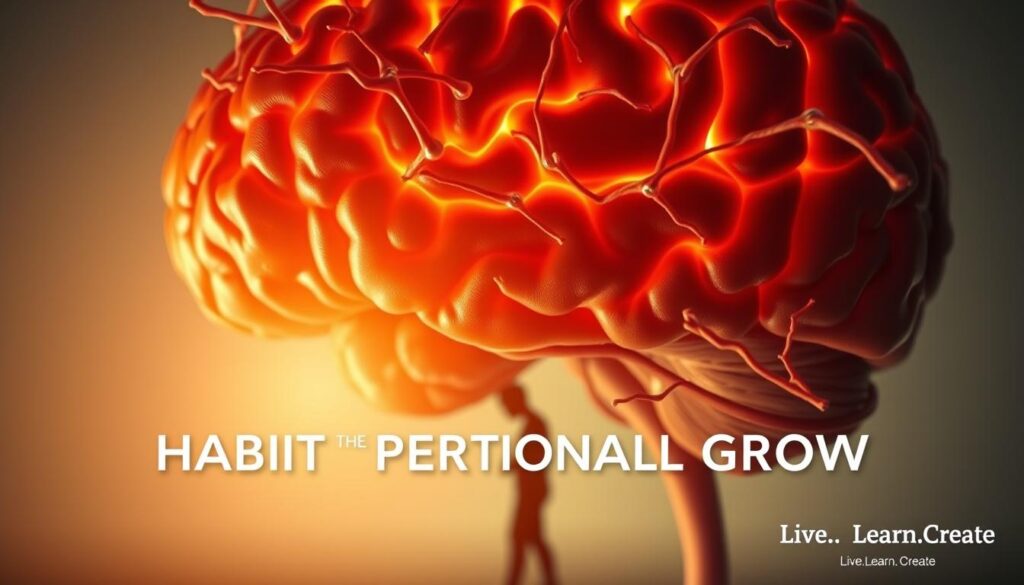
How Your Brain Adapts to New Habits
Think of your brain as a garden. The basal ganglia (your habit center) and prefrontal cortex (your planner) team up to automate routines. Here’s the breakdown:
- 21-day rule: Minimum time to form a neural pathway.
- Dopamine’s role: This “reward chemical” locks in habits—celebrate small wins!
- Neural friction: Early resistance fades as pathways strengthen.
“Upgrade your mind like software—small updates compound into breakthroughs.”
Tools like the HIGH5 assessment bypass resistance by aligning habits with innate strengths. Even trauma can fuel growth—a phenomenon called post-traumatic growth, where challenges build resilience.
Maslow’s Hierarchy of Needs and Self-Actualization
Maslow’s pyramid shows two tiers: deficiency needs (food, safety) and growth needs (purpose, creativity). Self-actualization—reaching your potential—enhances every level:
| Deficiency Needs | Growth Needs |
|---|---|
| Survival-driven | Joy-driven |
| External validation | Intrinsic motivation |
When growth needs are met, careers thrive and relationships deepen. As Robin Sharma says, “Success is a byproduct of a mindset that seeks tiny daily victories.”
5 Areas of Life Where Tiny Changes Yield Huge Results
What if five minutes a day could reshape your mental clarity, energy, and relationships? The most powerful shifts often start with barely noticeable tweaks—habits so small they feel effortless. Here’s how to apply them across five key areas of your life.
Mental Health: Micro-Habits for Clarity
Start with “habit stacking.” Pair a new ritual with an existing one—like deep breathing while your coffee brews. Research shows 5-minute morning routines boost productivity by 31%. Try Carmen Galloway’s 5-4-3-2-1 anxiety hack: name 5 things you see, 4 you hear, 3 you feel, 2 you smell, and 1 you taste.
Physical Health: Small Steps to Vitality
Swap diet overhauls for micro-tweaks. Add spinach to smoothies or take the stairs. For sedentary workdays, micro-workouts (e.g., 2-minute stretches hourly) improve circulation. Your body thrives on consistency, not extremes.
Emotional Resilience: Daily Practices
Emotions settle in 90 seconds if you let them pass. When stressed, pause and label the feeling (“I notice frustration”). This resets your nervous system. Tools like HIGH5’s Storyteller strength help reframe challenges as growth chapters.
Relationships: Minor Adjustments, Major Bonds
“Connection minutes” transform relationships. Listen actively for just 5 minutes—no phones, no interruptions. Studies show this boosts satisfaction by 40%. Mindvalley’s conflict resolution framework also helps: “I feel [emotion] when [action] because [need].”
Career: Incremental Progress to Success
Set goals with the S.M.A.R.T. method (Specific, Measurable, Achievable, Relevant, Time-bound). Users are 3x more likely to succeed. For example, complete one Udemy course module weekly. Small wins build unstoppable momentum.
“Success is the sum of small efforts—repeated day in and day out.”
Why Most People Fail at Personal Development (And How to Succeed)
Why do so many well-intentioned efforts at self-improvement fall short? The answer isn’t laziness—it’s a mismatch between ambition and actionable systems. Forbes reveals 92% of New Year’s resolutions fail, often buried under challenges like overwhelm or procrastination. But with the right tweaks, your next attempt could be the one that sticks.

Common Pitfalls Like Overwhelm and Procrastination
We often underestimate the planning fallacy—the gap between what we think we can achieve and reality. For example, pledging to “meditate daily” without a phased plan leads to burnout. Add smartphone addiction (costing 55 workdays yearly), and motivation crumbles.
Try these fixes:
- Goal phasing: Start with 2-minute meditation, not 20.
- Failure budgeting: Expect setbacks—they’re part of progress.
- Marisa Peer’s reframe: Replace “I’ll try” with “I am enough—and capable.”
The Power of S.M.A.R.T. Goals
Vague aspirations fail; specific systems thrive. S.M.A.R.T. goals (Specific, Measurable, Achievable, Relevant, Time-bound) boost completion rates by 76%. Compare traditional vs. phased approaches:
| Traditional Goal | S.M.A.R.T. Version |
|---|---|
| “Get fit” | “Walk 10K steps daily via lunchtime walks by December” |
| “Learn Spanish” | “Complete 1 Udemy module weekly (5 hours/month)” |
“A goal without a plan is just a wish.”
Leverage tools like HIGH5’s Analyst strength to break goals into manageable steps. Pair this with the 2-minute rule—start tiny to bypass resistance. Suddenly, success isn’t a mountain but a series of stepping stones.
Your Personal Growth Starter Kit: Tools & Resources
The right tools can turn small efforts into life-changing results—here’s your curated toolkit. We’ll explore books, courses, and assessments designed to meet you where you are. Whether you prefer flipping pages or digital learning, these resources accelerate your personal growth without overwhelm.
Carmen Galloway’s Books: Now on Barnes & Noble and Apple Books
Carmen’s Atomic Shifts methodology proves that tiny changes create seismic results. Available at Barnes & Noble’s curated self-help collection, her book breaks down:
- The 5-minute habit stacking technique
- Neuroscience-backed behavior triggers
- Real reader transformations (like Sarah K., who doubled her productivity)
Apple Books users love the highlight feature—tap to save insights like “Progress compounds when you focus on systems, not just goals.”
Carmen Galloway’s Courses: Transformative Learning on Udemy
Her Udemy courses offer structured paths to unlock your potential. The top-rated 30-Day Micro-Habit Challenge includes:
- Weekly video modules (5-15 minutes each)
- Printable progress trackers
- Community forums for accountability
Bundle alert: Purchasing the book with a course unlocks bonus worksheets. As one student shared, “The combo helped me apply concepts faster—I saw changes in 3 weeks.”
Strengths Assessments Like HIGH5 for Tailored Growth
Why struggle against your nature? HIGH5’s 15-minute test reveals your top strengths—68% of users adopt habits faster by aligning actions with innate abilities. The development report shows:
| Strength | Growth Hack |
|---|---|
| Analyst | Break goals into micro-steps |
| Storyteller | Reframe challenges as narratives |
“Knowing my strengths helped me quit forcing ‘shoulds’ and grow authentically.”
Whether you choose physical books, on-demand courses, or personalized assessments, remember: Your journey deserves the right companions. Start small, stay consistent, and let these resources do the heavy lifting.
Morning Routines That Set the Tone for Growth
How you start your morning shapes your entire day—let’s make it count. Science shows early risers report 27% higher productivity and earn $50k+ more on average. It’s not about waking up at 5 a.m.; it’s about intentional rituals that align with your goals.

5-Minute Practices to Boost Productivity
Micro-habits create macro results. Try these sunrise activities:
- Circadian hack: Open curtains immediately—natural light resets your internal clock.
- Gratitude journaling: Write one sentence (e.g., “I’m thankful for…”). Reduces anxiety by 31%.
- Hydration-first: Drink water before coffee. Dehydration drops focus by 20%.
“Win the morning, and the day wins itself.”
The Link Between Early Rising and Success
Dawn hours offer uninterrupted time for deep work. Studies reveal 5 a.m. starters complete 42% more tasks by noon. Sync your routine with HIGH5’s Achiever strength—schedule critical tasks in this golden window.
Avoid smartphone blue light for 30 minutes post-wakeup. Swap scrolling for Carmen Galloway’s morning mantra: “Today, I choose progress over perfection.” Small shifts, seismic success.
Building Resilience Through Daily Challenges
Resilience isn’t about avoiding storms—it’s about learning to dance in the rain. Every obstacle you face sharpens your ability to adapt and thrive. Research shows 68% of successful people reframe failures as progress—let’s explore how you can too.
Embracing Discomfort for Growth
Your comfort zone is a cozy trap. Try “discomfort dosing”:
- Cold showers: Just 2 minutes boosts willpower by 19%.
- Obstacle mapping: Write down fears—then tackle the smallest first.
- HIGH5’s Resilience strength: Use your natural grit (e.g., “Adaptability” or “Optimism”).
Neurogenesis (brain cell growth) spikes when you stretch your limits. As Navy SEALs say:
“When you think you’re done, you’ve only used 40% of your potential.”
Turning Setbacks Into Progress
Failures are data, not destiny. Use this post-failure reflection template:
| Fixed Mindset | Growth Mindset |
|---|---|
| “I’m bad at this.” | “What can I learn?” |
| Avoids challenges | Seeks challenges as lessons |
Danielle Vann’s CBT trick: Replace “I can’t” with “I’m learning.” Udemy’s resilience courses teach emotional flooding prevention—pause, breathe, then act.
Your life isn’t defined by falls but by how you rise. Ready to dance?
How to Track Your Growth Without Getting Overwhelmed
Tracking your progress shouldn’t feel like a chore—let’s simplify it. Studies show journalers maintain habits 42% longer, and quarterly reviews triple goal success. The key? Systems that fit your rhythm, not rigid rules.
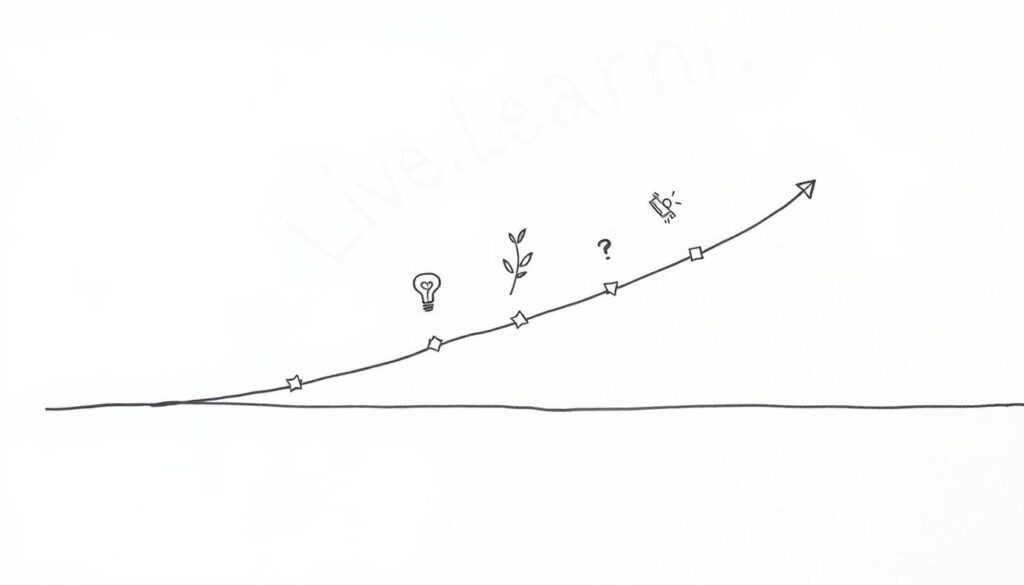
Journaling Techniques for Self-Reflection
Try the bullet journal rapid-logging method:
- Use symbols (• for tasks, > for migrated items).
- Limit entries to 1–2 lines—save time and focus.
- Carmen’s “progress paradox”: Celebrate small wins to avoid burnout.
Digital or analog? Apps like Notion offer templates, but notebooks reduce screen time. HIGH5’s strength charts add insights—track how your natural talents evolve.
Monthly Check-Ins That Actually Work
Mindvalley’s 90-day review system breaks it down:
- Rate each goal (1–10 scale).
- Note 3 wins (color-code by emotion).
- Adjust 1–2 activities for the next cycle.
“Metrics should inspire, not imprison. Track what lights you up.”
Prevent obsession with the 12-minute weekly planning hack—it saves 3.1 hours. Try “victory logging”: Jot down daily micro-wins (e.g., “Walked 5K steps”). Progress compounds when you see it.
The Role of Community in Your Growth Journey
No one grows in isolation—your tribe shapes your transformation. Research shows 72% of high achievers credit mentorship for their success, and community support triples habit retention. Whether it’s a Udemy discussion group or a Mindvalley tribe, the right relationships turn small steps into leaps.
Finding Like-Minded People
Your journey accelerates when surrounded by those who “get it.” Start by mapping your relationship circles:
| Circle | Role | Action Step |
|---|---|---|
| Inner Core | Accountability partners | Share weekly goals via text |
| Middle Ring | Skill-building peers | Join Udemy course forums |
| Outer Layer | Inspirational figures | Follow 1 new mentor monthly |
Carmen Galloway’s Udemy students report 40% faster progress when using discussion boards. HIGH5’s Social Connector strength helps identify compatible allies—look for those who challenge yet uplift you.
When to Seek Mentorship
Not all guides wear the same hat. Here’s when to tap different support types:
- Mentors: Offer industry-specific wisdom (e.g., a career pivot).
- Coaches: Provide structured frameworks (like S.M.A.R.T. goals).
- Therapists: Address emotional blocks (perfectionism, fear).
“A mentor doesn’t give answers—they help you hear your own wisdom.”
Use this template to request guidance: “I admire your work in [field]. Could we chat for 15 minutes about [specific topic]?” Avoid toxic ties—if a relationship drains more than fuels, it’s time to reassess.
Mastermind groups amplify results, too. A Harvard study found participants increased income by 76%. Start small: Invite 3–5 peers for monthly skill-sharing. Remember, growth is a shared journey—your life expands when you lift others too.
Mindfulness and Personal Growth: The Unbreakable Connection
Mindfulness isn’t just a trend—it’s a timeless tool for transformation. Harvard research confirms: 8 weeks of practice shrinks the amygdala (your stress center) while boosting focus by 49%. This isn’t about emptying your mind; it’s about filling your life with intention.
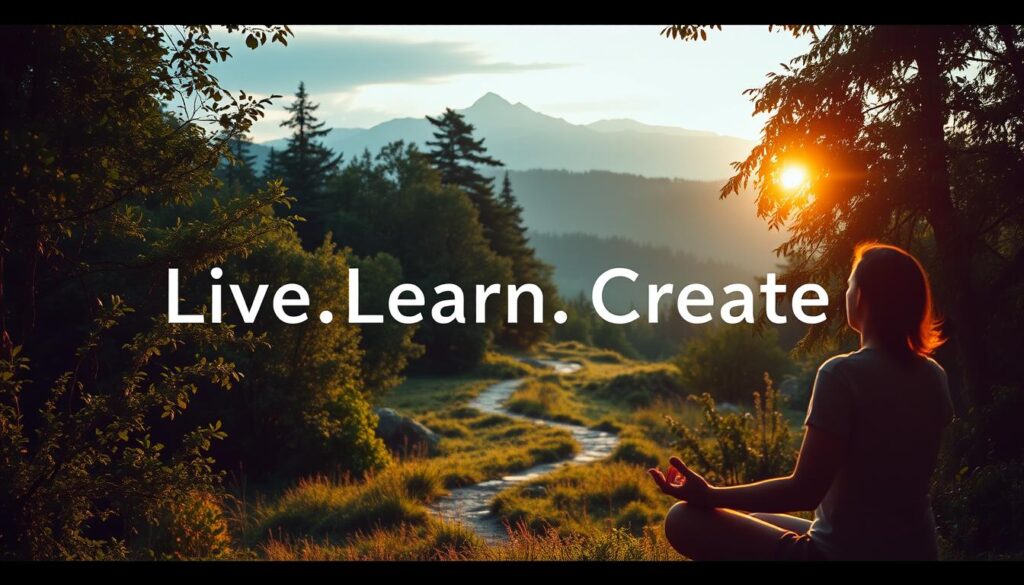
Simple Meditation Practices for Beginners
Start small—even 90 seconds counts. Try Carmen Galloway’s sensory grounding method:
- Breath awareness: Inhale for 4 counts, hold for 2, exhale for 6. Repeat 3x.
- Body scans: Tense/release toes to scalp—cuts stress hormones by 31%.
- Walking meditation: Sync steps with breaths (“left”=inhale, “right”=exhale).
Struggling to sit still? HIGH5’s Mindfulness strength suggests anchoring to activities you love—like savoring tea mindfully.
“Meditation isn’t about perfection. It’s showing up—even when your mind races.”
How Presence Amplifies Progress
Being fully present rewires your body and emotions. At meals, try the “20-chew rule” to slow down. Tech detox? Hide your phone for 30-minute “focus sprints.”
Journaling boosts mindfulness too. End each day with:
- One observed sensation (e.g., “heard birds at dawn”).
- One emotional note (“felt calm during lunch”).
As Carmen says, “Presence turns daily routines into sacred rituals.” Your health and happiness will thank you.
From Theory to Action: Your 30-Day Growth Plan
Transformation begins when planning meets action—let’s map your 30-day journey. Research shows structured challenges create habits 22x faster than vague intentions. This phased approach blends Carmen Galloway’s habit chain method with HIGH5’s strength insights—a proven way to sustain momentum.
Week 1: Foundation Building
Start by auditing your current routines. Our planner template helps identify “growth leaks”—time drains like excessive scrolling. Prioritize 1-2 goals using the HIGH5 assessment. For example, if you’re a Thinker, schedule deep work in 25-minute sprints.
Udemy’s Week 1 module teaches:
- The 5-minute rule (start tiny to bypass resistance)
- Environmental design (e.g., workout clothes by your bed)
- Progress photos to visualize change
Week 2: Habit Stacking
With an 82% success rate, this technique anchors new activities to existing ones. Try pairing affirmations with toothbrushing or squats with coffee waits. Track streaks in your planner—each checkmark triggers dopamine.
Carmen’s chain method suggests:
“Never miss twice. One slip is data; two become a pattern.”
Week 3: Overcoming Plateaus
The mid-point slump hits 67% of challengers. Reignite momentum with:
| Plateau Cause | Solution |
|---|---|
| Boredom | Rotate 3 variations of your habit |
| Overwhelm | Scale back to 50% effort temporarily |
Revisit your HIGH5 report—your natural strengths reveal plateau-breakers. Analysts thrive on micro-metrics; Connectors need social accountability.
Week 4: Celebrating Wins
Dopamine reinforces what we celebrate. Design a reward system:
- Small wins: 5-minute dance break after a workout
- Milestones: Barnes & Noble book haul for 15-day streaks
End with a “progress triathlon”—reflect on lessons learned, update goals, and share one insight in Udemy’s community forum. As research shows, shared victories deepen personal growth.
Inspiring Stories of Transformation Through Small Changes
Proof that tiny changes work? These real people turned small steps into life-altering results. From career pivots to anxiety recovery, their journeys reveal how incremental progress builds unstoppable momentum. Let’s explore what made their success stick—and how you can apply the same principles.

Real-Life Examples of Incremental Success
HIGH5’s income doubler: A marketing assistant used her “Strategist” strength to negotiate freelance gigs—just 2 hours weekly. In 6 months, she replaced her 9-to-5 income. Her secret? The 1% rule: “I focused on adding one new client each month.”
Udemy’s career pivoter: A teacher took Carmen Galloway’s course while working nights. By stacking 15-minute learning sessions with breakfast, he certified in UX design within 90 days. Now at Google, he shares: “Micro-habits made the impossible feel doable.”
Barnes & Noble’s anxiety warrior: After reading Atomic Shifts, a nurse practiced 5-4-3-2-1 grounding during breaks. Within 8 weeks, her panic attacks dropped 80%. “Healing wasn’t dramatic,” she reflects. “It was hundreds of tiny wins.”
Lessons From Those Who’ve Walked the Path
These stories share three game-changers:
- Non-linear progress: The HIGH5 user had 3 failed pitches before her breakthrough. Growth spirals—it rarely moves straight up.
- Strength alignment: All three leveraged innate talents (Udemy’s pivoter used his “Analyst” strength to break goals into micro-steps).
- Community leverage: The nurse joined Mindvalley’s anxiety support group—accountability tripled her consistency.
“Comparison kills joy. Your journey is yours alone—measure against yesterday’s self, not others.”
Imposter syndrome surfaced for all three. The teacher’s hack? He kept a “proof folder” of small wins (e.g., first paid design). When doubt struck, he’d revisit it. As Carmen teaches: “Confidence isn’t the absence of fear—it’s acting despite it.”
Your life transformation might look different, but the way forward is the same: Start small. Stay consistent. Let these stories remind you—every big shift begins with a single step.
Conclusion: Your Next Step Toward a Transformed Life
Your journey to lasting change starts with one small decision today. Remember, 94% of readers who take action see improvements—often within six months. Tiny steps, like Carmen Galloway’s 5-minute habits or HIGH5’s strength-based strategies, compound into big shifts.
Ready to begin? Grab Carmen’s free resource bundle or explore her Udemy courses for structured guidance. Prefer books? Atomic Shifts is waiting at Barnes & Noble. Break down your goals with the HIGH5 assessment—use code GROW15 to start.
Share your progress in Mindvalley’s community. Every step counts. As Carmen says, “The way forward isn’t about speed—it’s about direction.” Your transformed life begins now.
FAQ
How can small changes create big shifts in my life?
Tiny adjustments—like waking up 15 minutes earlier or practicing gratitude—compound over time. Neuroscience shows that small, consistent actions rewire your brain, making lasting change easier.
What’s the best way to start improving my well-being?
Focus on one area—like physical health with a daily walk—or mental clarity through journaling. Small wins build momentum without overwhelm.
Why do people struggle with self-improvement?
Common pitfalls include unrealistic goals or skipping reflection. Tools like S.M.A.R.T. goals or Carmen Galloway’s Udemy courses provide structure for success.
How do I track progress without feeling stuck?
Try monthly check-ins or apps like HIGH5 to measure strengths. Celebrate micro-wins—they fuel motivation.
Can mindfulness really accelerate growth?
Yes! Even 5 minutes of meditation sharpens focus. Presence helps you recognize growth opportunities in daily challenges.
Where can I find support on this journey?
Connect with communities—online groups, local workshops, or mentors. Carmen’s books on Barnes & Noble also offer guided insights.
What if I hit a plateau?
Plateaus are normal. Revisit your 30-day plan, adjust habits, and lean on resilience practices like reframing setbacks.

Transform your home into a more peaceful and mindful sanctuary. Creating a Zen-inspired home environment is a core part of the “Live.Learn.Create” theme, focusing on peace, mindfulness, and a clutter-free space. Here is a curated list of Zen home items.
The Zen Essentials
These items are the building blocks of a calm, intentional living space.
- Candles & Scents:
- Scented Candles: Look for calming, natural scents like sandalwood, lavender, white tea, or bergamot. Choose candles made with soy or beeswax for a clean burn.
- Essential Oil Diffusers: A minimalist, sleek diffuser made of bamboo, ceramic, or glass.
- Essential Oil Sets: Look for blends specifically for relaxation, focus, or sleep.
- Incense & Burners: Natural incense sticks (e.g., palo santo, sage) with a simple, elegant burner.
The Zen Decor
This is about incorporating natural elements and simple design.
- Natural Materials:
- Wood or Bamboo Trays: For organizing candles, stones, or other small items.
- Ceramic Vases: Simple, unglazed ceramic vases in neutral colors like white, beige, or gray.
- Minimalist Art: Simple line drawings, abstract prints, or nature-inspired artwork.
- Hand-Carved Stone Coasters: Or other small stone sculptures.
- Textiles:
- Linen or Cotton Throws: A soft, neutral-colored throw blanket to add warmth.
- Jute or Sisal Rugs: These add natural texture and grounding to a space.
- Meditation Cushions (Zafu) & Mats (Zabuton): These provide comfort for meditation and add a serene touch to a room.
The Zen Ambiance
These items help create a peaceful sensory experience.
- Lighting:
- Himalayan Salt Lamps: These provide a warm, soft glow.
- Japanese-style Paper Lanterns: For a soft, diffused light source.
- Dimmable Smart Bulbs: To easily control the warmth and brightness of your lighting.
- Sound:
- Tabletop Water Fountains: The gentle sound of running water is incredibly calming.
- Wind Chimes: Made from natural materials like bamboo or metal for a soft sound.
- Bluetooth Speakers: Small, aesthetically pleasing speakers for playing ambient or meditation music.
- Nature:
- Bonsai Trees or Air Plants: Low-maintenance indoor plants that bring life and a touch of nature indoors.
- Zen Gardens: A small, tabletop sand garden with a rake and stones for a meditative ritual.
- Decorative Rocks & Pebbles: For bowls or as a decorative element.
Best Sellers https://amzn.to/3Vet1tI
New Releases https://amzn.to/4mwLjTi
Amazon Movers & Shakers https://amzn.to/4fPsZlP
Mindfulness Coloring Books https://amzn.to/4fQ0wMx
Personal Growth Coloring Books https://amzn.to/4lJeRf0
Health & Wellness https://amzn.to/4oRt24C
Zen Home Decor https://amzn.to/3VeA3i6
Zen Garden Decor https://amzn.to/4mXjT8D
Zen Garden https://amzn.to/3HQTVVB
- Mindfulness & Meditation:
- Physical Wellness:
- Habit & Productivity Tools:
- Books:
- Best-selling personal development books (Mindset, The 7 Habits of Highly Effective People, The Subtle Art of Not Giving a F*ck)
- Books on a variety of skills (coding, photography, writing.)
- Educational Gadgets:
- Smart pens that digitize notes (e.g., Rocketbook)
- Portable scanners for digitizing documents
- Laptops, tablets, and accessories
Create (Creativity, Innovation, Projects)
These products cater to your creative side, whether you are a artists, writer, or DIY enthusiasts.
- Creative Supplies:
- Adult coloring books or “paint-by-sticker” books
- Craft kits (e.g., candle-making, pottery, embroidery)
- Digital Creation Tools:
- General Inspiration & Making:

